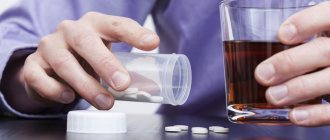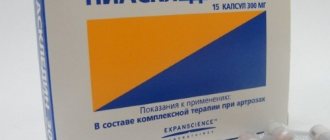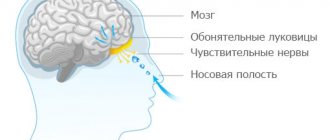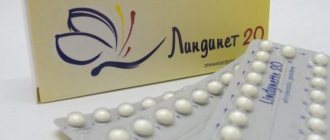Safety of the drug Sevoran
Sevoran is a non-narcotic sedative drug. The main active ingredient is sevoflurane (manufactured in Great Britain). Contains no additives or chemical stabilizers. Unlike anesthesia, non-toxic products are formed during the metabolism, and due to the low solubility of the drug in the blood, administration and removal from the condition occur quickly and without complications .
It is administered to the body using an inhalation mask. Provides rapid immersion into controlled sleep. During sedation, consciousness does not turn off, the patient is in a state of superficial sleep. The concentration of the drug is selected individually by the anesthesiologist and monitored throughout the entire period of exposure. Awakening occurs 5-10 minutes after stopping the supply of the substance, easily and without side effects.
Sevoran is absolutely harmless to health:
- non-toxic, non-addictive
- does not irritate the respiratory tract
- does not accumulate in the body, is quickly eliminated
- does not cause nausea, increased salivation
- has no effect on blood circulation rate or hemodynamics
- does not concentrate in the kidneys and liver even with prolonged sleep (up to 9 hours).
Is there an alternative to using anesthesia?
Yes, of course there is! At the Dental Master clinic, we use not only mask anesthesia Sevoran for children (or another drug for intravenous administration - propofol), but also mild sedation with nitrous oxide. The oxygen-nitrogen mixture is supplied through a nasal breathing mask. This option is much easier than anesthesia - the child does not fall asleep, but remains conscious, hears everything, understands and can respond to the doctor’s requests, but is in a calmer and more relaxed state.
This anti-stress treatment option requires local anesthesia because nitrous oxide is calming but does not have an analgesic effect. Our pediatric dentist Tatyana Vladimirovna Ermakova will do everything to calm the child, set him up in a positive mood and treat him using only nitrous oxide sedation and local anesthesia, but in some situations, the only way to properly treat a child’s teeth is anesthesia.
Advantages compared to narcotic drugs
| Disadvantages of general anesthesia | Advantages of Sevoran |
| Route of administration Intravenous or intubation | Method of administration Inhalation |
| Toxicity Toxic drugs, opiates | Toxicity Safe hypnotic drug without toxic impurities |
| Effect on the body Deep failure into unconsciousness | Effect on the body Plunge into sleep without losing consciousness, reflexes are preserved |
| Exit from the state Several hours. Brain fog, nausea, vomiting, dizziness | Exiting the state Quick awakening in 5-10 minutes. Clear mind, no side effects |
| Hospitalization Mandatory hospital stay for 1-2 days | Hospitalization After 30-40 minutes you can go home |
In what cases is it used in dentistry?
Treatment under sedation with Sevoran is used when planning large-scale or painful procedures in various areas of dentistry:
- Therapy Simultaneous treatment of caries, pulpitis, periodontitis of several teeth
- Implantation Installation of implants, bone grafting, sinus lift
- Periodontics Surgeries on gums, excision or augmentation of soft tissue, formation of a gingival contour around implants
- Surgery Removal of wisdom teeth, opening of gumboil or abscess, removal of dental roots, cysts and inflammation on the roots of teeth
- Orthopedics Grinding of a large number of teeth for orthopedic structures, installation of crowns or veneers
- Individual indications Allergy to local anesthetics, severe panic fear of upcoming treatment.
A safe way to experience treatment without stress and pain
Inhalation anesthesia with Sevoran is a unique opportunity to combine several procedures and solve a maximum of dental problems in 1 visit without pain or emotional overload.
Levin Dmitry Valerievich Chief physician and founder of the Doctor Levin center
Sevorane®
General recommendations
The drug Sevoran® can only be used by specialists
trained in general anesthesia, in the department -
facilities equipped with everything necessary to ensure airway patency, perform artificial ventilation, oxygen therapy and resuscitation.
All patients undergoing anesthesia with sevoflurane should be monitored, including monitoring of the electrocardiogram (ECG), blood pressure (BP), oxygen saturation, and end-tidal carbon dioxide (CO2) partial pressure.
During anesthesia, an increase in sevoflurane concentration leads to the development of dose-dependent blood pressure. Since sevoflurane is insoluble in blood, these hemodynamic changes may occur earlier than with other inhaled anesthetics. Deep anesthesia may be associated with a significant decrease in blood pressure and respiratory depression; To correct these phenomena, it is recommended to reduce the concentration of sevoflurane in the gas mixture.
The concentration of the drug coming from the evaporator must be precisely known. Since inhalational anesthetics differ in physical properties, only specially calibrated evaporators for Sevoran® should be used to deliver Sevoran®. The dosage of the drug during general anesthesia should be selected individually depending on the patient's response. With an increase in the concentration of the drug, an increase in arterial hypotension and depression of respiratory function may be observed.
There have been isolated reports of QT prolongation, very rarely associated with torsade de pointes (TdP) (in some cases fatal). Sevoran should be used with caution in patients susceptible to these complications.
There have been isolated case reports of ventricular arrhythmias in pediatric patients with Pompe disease. General anesthesia drugs, including Sevoran®, should be used with caution in patients with mitochondrial diseases.
Increasing the concentration of sevoflurane to maintain general anesthesia causes a dose-dependent decrease in blood pressure. An excessive decrease in blood pressure may be associated with deep general anesthesia; in such cases it can be increased by reducing the concentration of sevoflurane supplied.
When using the drug Sevoran, as well as other drugs for general anesthesia, in patients with coronary heart disease, it is necessary to maintain stable hemodynamics to avoid myocardial ischemia.
After recovery from anesthesia, patients require additional observation before transfer to a specialized department.
Replacement of overdried CO sorbents?
When using the drug Sevoran® in anesthesia devices containing overdried CCL sorbents (especially those containing potassium hydroxide), rare cases of excessive overheating and/or spontaneous smoke and/or ignition of anesthesia devices have been described. When CO2 sorbent reservoirs overheat, an unusual delay in increase or unexpected decrease in the inhalable concentration of Sevoran® may occur, despite the existing evaporator settings.
The exothermic reaction of sevoflurane decomposition with the formation of products of this decomposition, which occurs during the interaction of sevoflurane with a CO2 sorbent, intensifies if the sorbent dries out; for example, during long-term passage of dry gas through a tank with CO2 sorbent. The formation of sevoflurane decomposition products (methanol, formaldehyde, carbon monoxide, and components A, B, C and D) was observed in the breathing circuit of experimental anesthesia machines with overdried sorbents when the sevoflurane concentration reached a maximum (8%) for 2 or more hours . Formaldehyde concentrations generated under such conditions reached levels capable of causing mild respiratory tract irritation. Clinical evaluation of the effects of sevoflurane degradation products on the body under extreme conditions has not been carried out.
If the anesthesiologist suspects that the CO2 sorbent is too dry, it should be replaced before using sevoflurane. When the CO2 sorbent dries out, the color of the indicator does not always change. Therefore, the absence of changes in the color of the indicator cannot be considered confirmation of adequate hydration. CO2 sorbents must be changed regularly, regardless of the color of the indicator.
Hyperkalemia in the perioperative period
The use of inhalational anesthesia in children has, in rare cases, caused an increase in serum potassium concentrations, which has led to the development of cardiac arrhythmias and death in the postoperative period. The risk is higher in patients with latent and clinically manifested neuromuscular diseases, especially in patients with Duchenne muscular dystrophy. In most cases, there was a connection between the development of these complications and the simultaneous use of suxamethonium. These patients also experienced a significant increase in serum creatine phosphokinase activity and, in some cases, changes in urine composition indicating myoglobinuria. Although there are some similarities with the manifestations of malignant hyperthermia, none of these cases showed muscle rigidity or symptoms associated with increased muscle metabolism. Measures to relieve hyperkalemia and persistent arrhythmia should be immediately initiated and an examination should be carried out to identify latent neuromuscular disease.
Renal dysfunction
The safety of Sevoran in this group of patients has not been fully established; it should be used with caution in patients with renal failure.
Data from controlled studies using low gas flow rates are limited, however, clinical and experimental data indicate the possibility of kidney damage, presumably due to component A. According to these data, the use of sevoflurane for 2 MAC hours at low gas flow rates ( less than 2 l/min) may be associated with the development of proteinuria and glycosuria.
The level of exposure to component A at which clinical nephrotoxicity is possible has not been established; however, all factors leading to increased exposure to component A in children should be considered, particularly the duration of exposure, gas flow rate and sevoflurane concentration. During anesthesia, the concentration of inhaled sevoflurane should be titrated and the flow rate of the gas mixture monitored to minimize exposure to component A. To achieve this, sevoflurane exposure should not exceed 2 MAC x hour, at a flow rate of 1 to < 2 l/min. Gas mixture flow rates < 1 l/min are not recommended.
Clinical experience with sevoflurane in patients with renal impairment (creatinine clearance > 1.5 mg/dL) is limited;
therefore, the safety of the drug in these patients has not been established.
Liver dysfunction
In post-marketing surveillance, very rare cases of liver dysfunction (mild to severe) or hepatitis (with or without jaundice) in the postoperative period have been reported.
Sevoflurane should be used with caution in patients with impaired liver function, as well as in concomitant use of drugs that can cause impaired liver function. There is evidence that a history of use of halogenated anesthetics, especially within the previous 3 months, may increase the risk of developing liver damage.
There are reports that a history of exposure to halogenated hydrocarbons may increase the potential for liver injury.
Rare cases of mild, moderate, or severe postoperative liver dysfunction or hepatitis (with or without jaundice) have been reported. Caution is recommended when using sevoflurane in the setting of liver dysfunction or in patients receiving treatment with drugs known to cause liver dysfunction. In patients who have experienced liver damage, jaundice, fever of unknown origin, or eosinophilia after the use of other inhalational anesthetics, it is recommended to avoid the use of sevoflurane if general anesthesia with intravenous drugs or regional anesthesia is possible. Malignant hyperthermia
In susceptible individuals, potent inhalational anesthetics, including sevoflurane, can induce a state of skeletal muscle hypermetabolism, resulting in increased oxygen demand and the development of a clinical syndrome known as malignant hyperthermia. The first sign of this syndrome is hypercapnia. Muscle rigidity, tachycardia, rapid breathing, cyanosis, arrhythmias and/or blood pressure instability may also occur. Some of these nonspecific symptoms may also occur during mild anesthesia, acute hypoxia, hypercapnia, and hypovolemia.
One case of malignant hyperthermia was reported in clinical studies. In addition, cases of malignant hyperthermia (including fatal cases) have been reported in post-marketing surveillance.
Treatment of malignant hyperthermia involves discontinuation of drugs that caused its development (for example, sevoflurane), intravenous administration of dantrolene (detailed information on the use of dantrolene is given in its instructions for use) and supportive intensive symptomatic therapy, including maintaining normal body temperature, respiratory and circulatory functions, monitoring water-electrolyte and acid-base balance. Renal failure may develop later, so diuresis should be monitored and maintained if possible.
Neurosurgical interventions
If the patient is at risk of increased intracranial pressure, Sevoran® should be used with caution in combination with measures aimed at reducing intracranial pressure, such as hyperventilation.
Convulsions
There have been reports of rare cases of seizures associated with the use of sevoflurane.
Use in children
There are known cases of seizures occurring during the use of sevoflurane. Many of these cases occurred in children (from two months of age) and adolescents; most of them had no risk factors for seizures.
Sevoflurane should be used with caution in patients with a tendency to develop seizures.
In children who were prescribed sevoflurane for induction of anesthesia, dystonic movements were observed that disappeared on their own without requiring treatment. A causal relationship with sevoflurane has not been confirmed.
Children with Down syndrome are at increased risk of bradycardia and hypotension during and after induction with sevoflurane.
Anesthesia in obstetrics
Sevoflurane has a relaxing effect on the uterus due to its pharmacological effects. A study performed during termination of pregnancy indicates increased uterine bleeding.
Available data supporting the safety of sevoflurane for mother and baby during elective caesarean section are limited. The safety of sevoflurane during vaginal delivery has not been studied.
Preparation
Usually, no specific preparatory measures are required before using Sevoran; the operation can be performed urgently. But if the patient is elderly or has general somatic diseases, anesthesiological preparation is required, which begins with a consultation with our anesthesiologist-resuscitator. The doctor will take an anamnesis and perform an electrocardiogram directly at the Center; you won’t have to run anywhere .
If factors are found that impede the use of the drug, consultation with specialists in the underlying disease and general clinical studies will be required.
[doctor's block]
How is dental treatment performed near Sevoran?
Treatment under sevoran - comfort for the patient
- Immersion in sleep Sevoran, mixed with oxygen and nitric oxide in a total concentration of 8%, is delivered through an inhalation mask into the lungs. Then a maintenance concentration of 0.5-3% is introduced, due to which the patient sleeps as much as necessary for dental procedures.
- Treatment under the supervision of an anesthesiologist Throughout the entire treatment, the patient is under the continuous supervision of an experienced anesthesiologist. Using special equipment, he monitors the body’s basic indicators.
- Awakening Upon completion of the procedures, the supply of the drug is stopped and the patient wakes up independently within 5-10 minutes. Treatment is monitored (CT, X-ray). If necessary, you can relax in a rest room specially equipped at the Center.
- You can go home After checking your well-being by the anesthesiologist, you can go about your business, even using your own transport, which would be impossible when using general anesthesia.
Contraindications to the procedure
In order for dental treatment under Sevoran to be completely safe, it is important to take into account the patient’s health characteristics and not use this type of anesthesia if there are contraindications, which include:
- individual intolerance to this drug (very rare, but does occur),
- hypertension and increased intracranial pressure,
- malignant hyperthermia.
In addition to absolute contraindications to Sevoran anesthesia for children, there are factors in the presence of which this drug should be prescribed with caution, taking measures to relieve possible complications. These factors include:
- cardiovascular diseases (CHD, etc.),
- chronic liver and kidney diseases,
- neuromuscular disorders,
- tendency to seizures,
- simultaneous use of calcium channel blockers (nifedipine, cordipine, verapamil), alpha and beta sympathomimetics (isoprenaline, epinephrine, norepinephrine).
Safety standards of the Doctor Levin center
The center is licensed to use drugs for medicinal sleep, and has the necessary equipment to support patients during treatment and in case of emergency situations.
License
Dental treatment in a state of medicinal sleep can only be carried out by clinics licensed to use drugs. However, licensing the work of an anesthesiology department is a complex and financially expensive task. Rospotrebnadzor places very serious demands on the spatial organization and technical equipment of operating units. It is impossible to re-equip an already operating clinic to meet these requirements. It is quite difficult to comply with all the conditions when opening a new one. Therefore, most clinics either abandon the idea of opening an anesthesiology department or begin to provide the service without a license in violation of the law. The risks of such treatment are not even worth talking about. The price of the issue is human life.
We value both our patients and our reputation. When opening the Center, ensuring the operation of the Anesthesiology and Resuscitation Department in accordance with the requirements of Rospotrebnadzor and the Ministry of Health was one of the initial tasks. we voluntarily undergo inspections by regulatory authorities and confirm the right to provide medical care in the field of anesthesiology and resuscitation.
Equipment
When carrying out therapeutic measures using sedatives, patient safety in our Center is ensured with the help of modern anesthesia-respiratory equipment and hemodynamic monitoring . While the patient is sleeping, an experienced anesthesiologist uses monitors to monitor heart function, levels of oxygen and carbon dioxide during inhalation/exhalation, breathing dynamics, pulse, and blood pressure.
We use only original certified medicines and emergency medicines. In case of emergency, the Center has highly qualified doctors and the necessary equipment for resuscitation measures (defibrillators, ventilators).
Specialists
A staff of experienced anesthesiologists and highly specialized nurses is the main condition for providing high-quality and safe anesthesia. They must be in the department every day full-time, and not come as needed, as is common in most ordinary clinics in Moscow. When the “visiting” doctor is not responsible for anything and does not guarantee anything, the patient cannot feel safe. The lack of full-time anesthesiologists in dentistry is the main obstacle to the widespread dissemination in Russia of the “gold standard” technology - dental treatment during sleep.
In our Center, the safety of patients during dental treatment under sedation is ensured by a full-time highly qualified anesthesiologist-resuscitator Zinoviev Sergey Alekseevich with a total work experience of more than 25 years. Since 2003, he has been the head of the anesthesiology department of the Center. During 18 years of treatment under his supervision, there was not a single complication.
STORIES
Content
In modern dentistry, anti-stress treatment methods have been successfully used for a long time, which is especially important for children. In particular, Sevoran anesthesia allows children to avoid anxiety and pain and treat their teeth with comfort. After waking up, the child will not experience unpleasant sensations, he will not be disturbed by unpleasant memories. The absence of psychological trauma will save the child from dental phobia and will lead to the fact that in the future he will consult a doctor as soon as he feels some kind of problem with his teeth, and will not wait until the last minute, when the tooth most likely cannot be saved.









